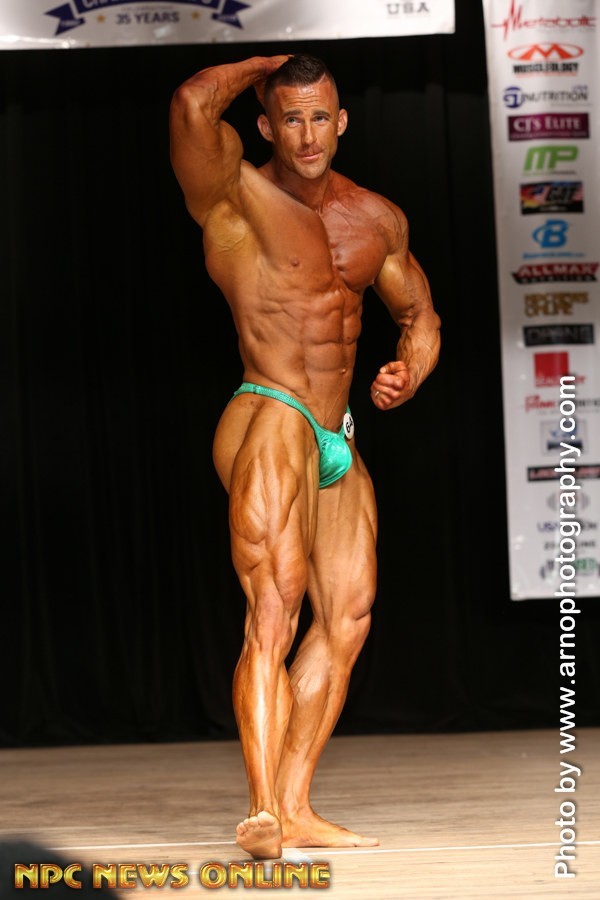The workout structure of the HWODs and the exercise cues/execution provided in every video will absolutely improve EVERYONES workouts, and results.
Below I go over a few key points that can and should vary the most from person to person. I can not individually prescribe the perfect volume/frequency/etc. for each and every one of you, so please consider this a template that will help you best determine where to place these variables, based on your current training experience and current training goals. Also, consider that even if I could meet with each of you individually, my recommendations would still be just an educated guess at the appropriate point for these variables. Anecdotally, there is the least amount of definitive science/research showing what is the “optimal” amounts of these variables. And from an “in the field” perspective, this is the variable I discuss/debate most with my peers, and I’m pretty sure I will not be finding a definitive answer anytime soon.
Just take comfort in knowing that if you’re constantly assessing where you currently are, and are at least thinking about how to improve upon these variables, you are ahead of the curve already.
Lastly, and most importantly, understand the main reason there is and most likely never will be a definitive answer for what is “optimal” pertaining to these variables: Execution changes all of them. If the “on paper” sets, reps and rest stay exactly the same, but execution improves, this is technically an increase in volume and intensity (as you will just be doing more “work” or have more TUT every set), also this improved execution is a form of progressive overload, as it will place more tension to the trained muscle, improve moment arms, all of which will increase torque at joints (which is all progressive overload is).
So even when a study “shows” that X number of sets, is superior to Y number of set for hypertrophy, realize even on “trained” individuals they are really just comparing X number of shit reps, that add up to X number of shit sets, and then comparing to another combination of shit plus shit. If there were ever any true control for execution, the results of every study ever done would drastically change.
Prioritizing body parts
-
Set up your split first and foremost around lagging body parts. Training them as frequently as possible, I recommend at least every other day. (When “training” them this often, may of the workouts can just be activation based. Focus on improving contraction quality. So you will not need to worry about recovery from the frequent sessions.
-
Keep the total volume low. Your worst body parts also tend to have the worst execution, so doing a lot of exercises and a lot of sets will just be adding up “more shit” essentially. So when training them every other day, some days you may only do 1-2 exercises
-
For exercise selection, stick with the exercises you feel best. (For example, if the goal is to grow your chest, don’t specialize “upper, clavicular, lower” fibers, just find movements you feel in your chest, as many fibers as possible, and stick with those for now) – so within the HWOD workouts, just exclude (or substitute) exercises that don’t work well for you.
-
Keep exercise intensity low (the loads you use relatively light). Again, if a body part is lagging, the form tends to be poor, so load is essentially not well directed at this point. Heavy loads will tend to go to the wrong muscles, or improperly through joints (increase risk for injury). Focusing on execution is technically a form of increasing “internal intensity”. Even if the weight in your hand is not increasing, you can better direct that load and create more tension in the trained muscle (ultimately, tension in the trained muscle should be considered the best variable to gauge intensity).
Training frequency/split
-
Train everything as often as possible. Or more specifically, training things as often as you can recover from it. Training is the stimulus/catalyst that triggers hypertrophy. The more you can create this stimulus the better.
- The only times I lower frequency, are when nutrients are extremely low (the end of a contest prep, or extremely restrictive diet), and planned “deloads”. I will often push the frequency as high as possible, essentially “over-reaching”, and then take the frequency way day for as long as is needed to fully recover. (Example, I may have 6 weeks high, and 2 weeks low, and repeat)
-
If you can only train a limited number of sessions per week, I would suggest training multiple body parts within each section. Instead of 10 exercises per body part (with your traditional “Bro split”), opt for 2-3 more efficient exercises for 3-4 body parts.
Volume
- Volume is always defined within the workouts as the total number of WORKING sets.
- The longer you have been training, the more volume (in general) you will need (and visa versa)
- The more muscle you have, the more volume (in general) you will need (and visa versa).
-
First consider the above two parameters based on your current stats, then apply the
following to current goals: If your goal is to put on absolutely as much muscle as possible (bulk – this would be “off season” for competitors), use the least amount of volume possible. If your goal is to recomp (increase muscle – not as much as bulking, and drop body fat – not as much as cutting – at the same time – this would be the start of a contest prep for most competitors) then increase the volume. If your goal is cutting, volume should be its highest (the “second half” of a prep, minus the last couple weeks, for most competitors).
Intensity (load used) and progressive overload
- Execution is the prerequisite to intensity. If your execution is horrible, you don’t feel a muscle well, or training it causes you joint pain/discomfort, you should not focus on intensity at all. You should never focus on “traditional” progressive overload.
-
If you execution is perfect, 10/10, you should use as much weight as possible at all times. And you should be focused on progressive overload and constantly increasing loads.
-
The only exception to the above parameters would be goal specific. Such as when in the final phases of a cut, or contest prep, when nutrition is not adequate for recovery. Here, at best, you should just focus on maintaining intensity the best you can.
Sample splits:
I will give you the three examples: 1) the beginner (less than 3 years lifting, poor execution, with minimal time allocated to training) 2) intermediate (3-10 years lifting, with average execution, and a decent amount of time allocated to the gym) 3) advanced (10+ years consistent lifting, excellent execution, as much time as needed allocated toward training) – I will use myself as the example here
Like most things, this is a template or guide. Work through all the above parameters and set your split the best you can. You will most likely be some combination, or somewhere in between the examples given.
Each split will also have an example of a “balanced split” – no lagging body parts in general. And a split with a lagging bodypart, and how you would structure the split to bring it up. For the lagging body part, you can of course just substitute in whatever your current priority is.
The beginner (balanced)
Monday- upper body
Tuesday-off
Wednesday- lower body
Thursday- off
Friday- upper body
Saturday-lower body
Sunday- off
The beginner (quads lagging)
Monday- upper body (plus 2 quad exercises – execution focus, not load)
Tuesday-off
Wednesday- lower body
Thursday- off
Friday- upper body (plus 2 quad exercises – execution focus, not load)
Saturday-lower body Sunday- off
Intermediate (balanced)
Day 1 – chest, delts, tris
Day 2 – back, biceps, calves
Day 3 – quads, hams, glutes
Day 4 – off
Intermediate (quads lagging)
Day 1 – quads, hams, glutes
Day 2 – back, biceps, calves (plus 1 quad exercise – execution focus, not load)
Day 3 – chest, delts, tris (plus 1 quad exercise – execution focus, not load)
Day 4 – quads
Day 5 – off
Advanced (my current split – upper body lagging)
Day 1
Workout 1: chest
Workout 2: arms
Day 2
Workout 3: back
Workout 4: delts
Day 3 OFF
Day 4
Workout 5:chest
Workout 6: biceps
Day 5
Workout 7: back
Workout 8: delts/triceps
Day 6 OFF
Day 7
Workout 5:chest/biceps
Workout 6: back
Day 8
Workout 7: legs
Workout 8: delts/triceps
Day 9 OFF
How to use the HWOD and follow my workouts


























 Flash back 10, 20, 30 years to any local gym. A starry-eyed young lad has just paid for his very first gym membership and is wondering around the foreign, yet amazing new terrain for the very first time. Like many before him, months or even years before that day he had something awaken deep inside him the first time he saw an “Arnold movie”. He then spent every day after that, poring over every muscle magazine he could find, analyzing the pages, inspired by what he sees. He cuts out workouts, pictures and diets to put on his wall. With the every piece of information he can gather, he plans his attack best he can for the first day he can begin his journey at the gym. He knows that he does not yet have everything he needs to build his perfect physique, but he does know he will work for it with all he’s got.
Flash back 10, 20, 30 years to any local gym. A starry-eyed young lad has just paid for his very first gym membership and is wondering around the foreign, yet amazing new terrain for the very first time. Like many before him, months or even years before that day he had something awaken deep inside him the first time he saw an “Arnold movie”. He then spent every day after that, poring over every muscle magazine he could find, analyzing the pages, inspired by what he sees. He cuts out workouts, pictures and diets to put on his wall. With the every piece of information he can gather, he plans his attack best he can for the first day he can begin his journey at the gym. He knows that he does not yet have everything he needs to build his perfect physique, but he does know he will work for it with all he’s got.



